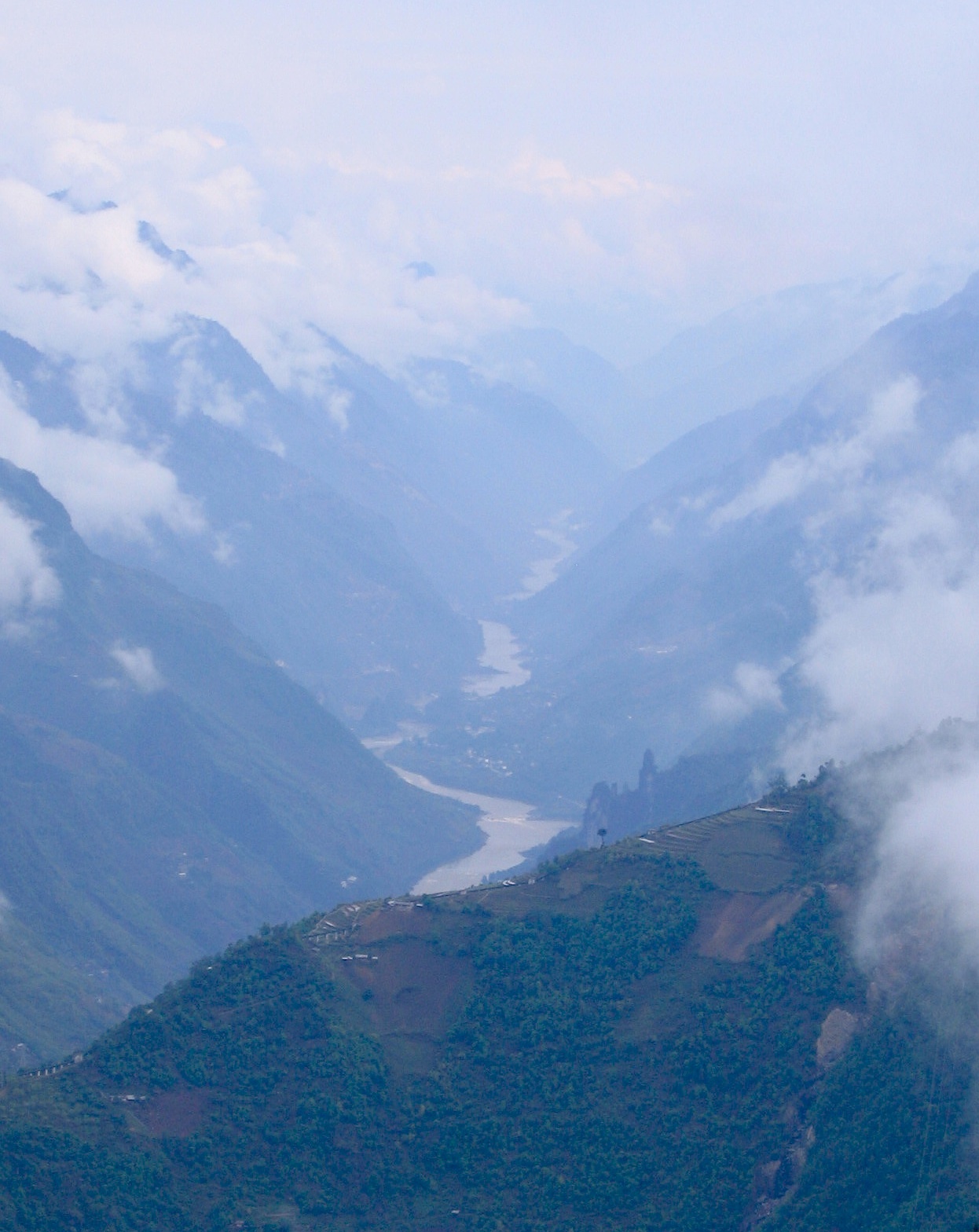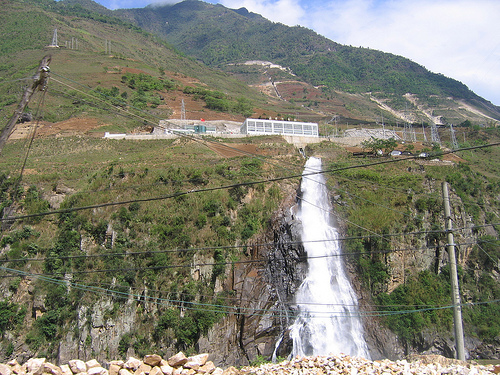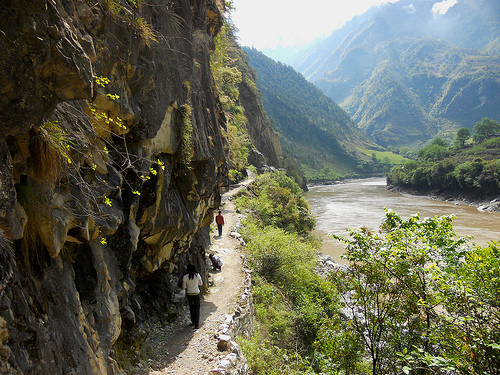This is part three of a three-part blog describing my recent trip to the Nu River valley in April 2011. All names have been changed to protect the identity of the interviewees. Part 1 sets the scene and Part 2 introduces voices from the ground.
Where to Go From Here?

Katy Yan
We ended our journey with a trip to the top of a mountain. Among the clouds, at an organic tea farm set among the foothills of the Himalayas, I had a perfect view of the Nu River as it meandered through the mountains.
Many mountain towns have been relocated by the government to (sometimes literally) soulless assembly-line houses by the river-some say as a form of better state control. Some villages have managed to stay, including this one. Up there in the clouds and away from the threat of dam-building, like the mountain hermits of ancient scroll paintings, we lost ourselves for a moment in our own personal reveries about the fate of the Nu valley below.
China's Janus-faced dams
The day before, we had paid a visit to a village doctor deep in the mountains. In contrast to She Jian's village, the doctor's village sits far from the Nu River mainstream, along a large tributary. After an arduous drive on unpaved roads (at one point nearly tipping over into the river), we arrived at the village on an overcast afternoon. Poor and largely Tibetan, this village sits near two medium hydro stations (one under construction) but receives no benefits from the project. According to the doctor, they have frequent blackouts, water quality deteriorated after the first dam was built, and the second dam will inundate their fields.

Katy Yan
The contrast between his village (two dams, no electricity) and She Jian's community (small dam, excess electricity) reveals how hydropower in China, like the Roman god Janus, has two faces: it brings wealth and opportunity for some, and misery to others. Despite the numerous hydro stations currently in operation in the Nu River valley, the distribution of the benefits is incredibly uneven, and poverty prevails even in the shadow of the hydropower stations.
If all the small and medium dams were effectively harnessed to meet the local governments' poverty alleviation goals, there would be no need for the large dams on the Nu mainstream. Right now, despite the governments' claim that the dam cascade will alleviate poverty, the energy from these dams are more likely to go east to the booming seaboard cities hungry for energy and luxury items. The government also sees the dams as a way of meeting its climate change targets under its 12th Five Year Plan, even though the energy from these large dams will likely fuel more industrial production and pollution, rather than replacing coal plants in its energy mix.

Katy Yan
In the next few months, International Rivers and our local Chinese partners will be working together to amplify expert and local voices in the Nu River dams debate, calling on the Chinese and Yunnan governments to explore other alternatives and not sacrifice the Nu River Grand Canyon for its climate change targets. Ultimately, we will make sure that reason and vision prevail: that the Chinese government does not commit an entire seismically-prone region to the risk of dam failure; and that it sees the value of preserving, undammed, a remnant of China's cultural, biological and ethnic heritage for present and future generations.
Stay tuned for updates on our progress and a video featuring voices from the ground!

